In the pre-modernist era, the south was dominated by an agricultural economy. The Civil War made it clear that the south could not rely on it to be successful in the future, and it also positioned much of it to start the transition to a more modern economy. Atlanta in particular, due to Sherman’s march, had great reason to rebuild and reimagine itself. The reconstruction period was the beginning of this change, but it was not until the Modernist era that Atlanta began its development into an industrial, STEM powerhouse. The philosophy and sentiments of Modernism have driven the industrialization of Atlanta and are at the heart of its success.
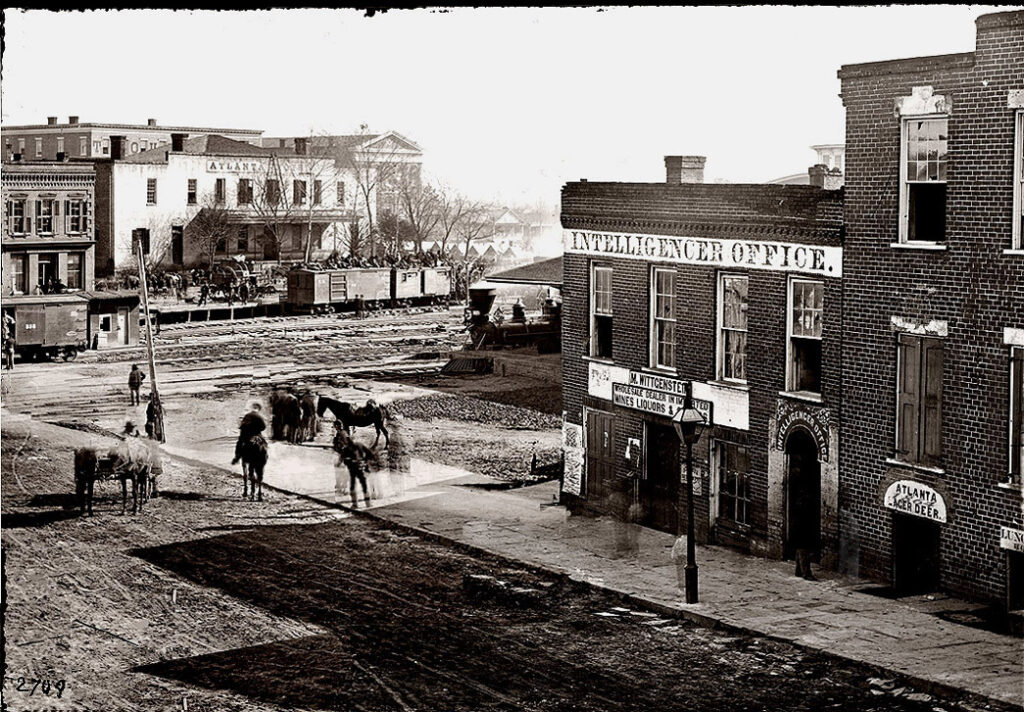
Toward the onset of the Civil War, modernism had not yet set in, but nonetheless, Atlanta had developed into a small industrial center. It had fifty street lamps in its downtown, a train depot, a population of around ten thousand, and, unfortunately, a busy slave market. This was impressive for the south, enough so to make it the third most guarded city in the Confederacy, behind Washington D.C. and Richmond, Virginia. Despite its grand reputation in the Confederacy, Atlanta paled in comparison to the great cities in the north. In 1860, New York City had a population of 813,669. Philadelphia had 565,529. Along with massive populations, these northern giants had much more established industry and infrastructure. The south could never match the north in production nor army size. It was destined to lose, it was just a matter of time. This can mostly be attributed to the south’s mindset. They were still holding on to their agricultural roots. Any industrial development was largely made out of necessity rather than a desire to adapt to the times and abandon tradition. Developments, for this reason, would not be made until the inception of the New South Creed, a modernist movement. Sherman’s march is often considered the nail in the coffin in the Confederacy’s loss. It crippled their economy and transport lines, forcing them to eventually surrender. It was gruesome, but it was the dawn of a new age for Atlanta.
At first, times were hard during reconstruction. As a result of the emancipation of the slaves, the agricultural labor supply dropped significantly and there were major food shortages. In addition, during Sherman’s march, the Union army destroyed much of Atlanta’s housing. This combined with the influx of freedmen from surrounding plantations led to a severe housing crisis, forcing many of the refugees to live in shantytowns. On top of all this, Atlanta was struck by smallpox and many died. Eventually, however, Atlanta made its comeback. The need for construction provided opportunities for the disenfranchised, resulting in an economic boom.
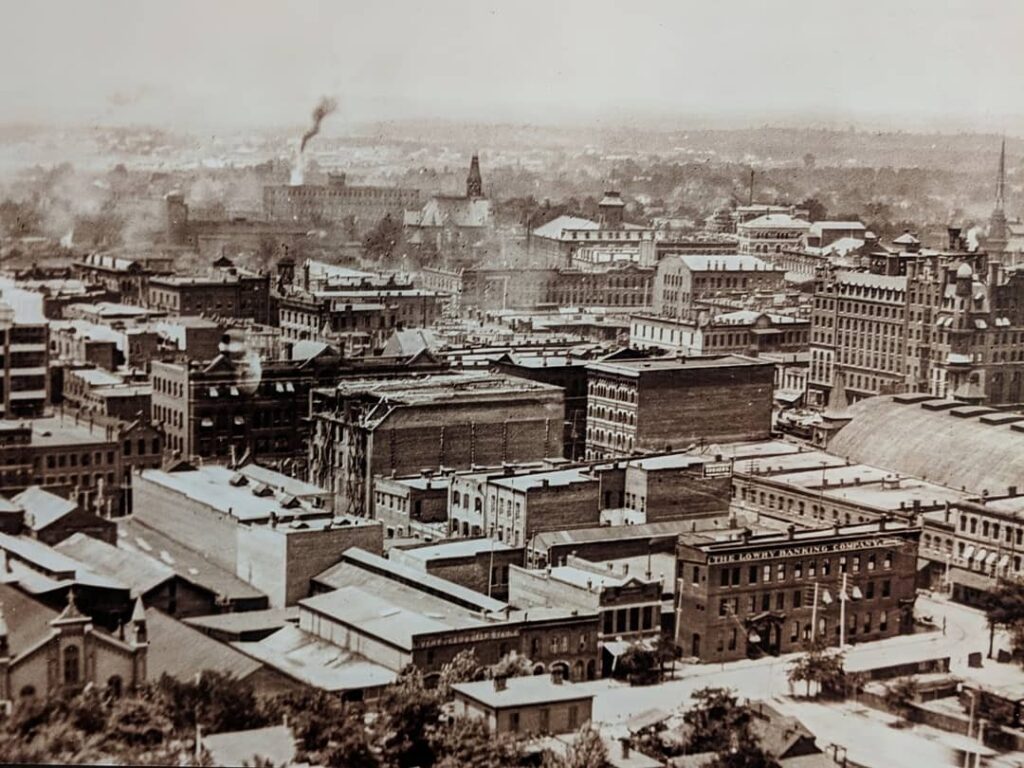
The city grew fast. It surpassed Savannah as Georgia’s most populous city and succeeded Milledgeville as the capital. Educational institutions Atlanta University and the Georgia School of Technology (now Georgia Tech) were established. The image on the right depicts the immense progress the city had made. It was this progress that led to the start of modernism. People were intrigued by the emerging new, industrial world; It was an exciting time of new innovations and ideas. They wanted to depart from tradition and live in the new world. At the onset of the modernist era in 1890, Atlanta had a population of 65,533, the 42nd most populous in the nation: a big leap from 99th in 1860. Additionally, its people were ready to move on from their roots. It was in the perfect position to thrive in the modernist era.
Atlanta had made immense progress through reconstruction, but it was only just beginning on its journey. One of the most integral parts of Atlanta’s industrialization and success was the foundation of the Georgia Institute of Technology. The Institute was a child of the ‘New South’ ideology, an instance of modernism. The term, coined by Henry W. Grady, encapsulated the desires of southerners to start fresh. They desired economic redevelopment modeled after the industrial revolution in the north, friendly relationships and cooperation with northern businessmen, and racial harmony. The founders, most notable of which is Nathaniel Edwin Harris, recognized that Atlanta and Georgia as a whole needed technical education to facilitate the advancement of industry. They traveled up north to examine prominent technical universities and schools and assess their educational styles. They chose to model their school after the Worcester Polytechnic Institute style for its unique combination of theory and practicality. After one failed bill, the founders submitted another that was passed in the House 94-62 and in the Senate 69-44. There was some debate as to where the school should be located, but eventually, Atlanta was victorious: a monumental moment in the modernization of Atlanta.
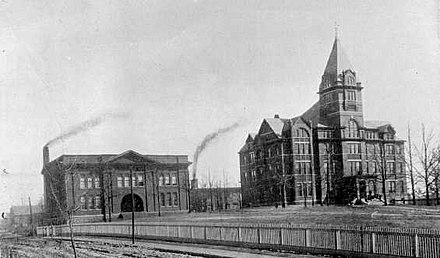
The image to the right shows the beginnings of the Institute, a perfect representation of modernism’s start. Modernism was built on people’s desires to leave behind the old and embrace the new. Georgia Tech was founded to facilitate the transition from an agrarian economy, which dominated the south for centuries, to an industrial one. Through its early years, Tech would expand its educational offerings to include electrical, civil, textile, and chemical engineering. Tech was among the first few universities and colleges in the nation and the first in the south to offer engineering education. This gave Atlanta an early edge in the sciences and technology, spelling a legacy of innovation and success for the city.
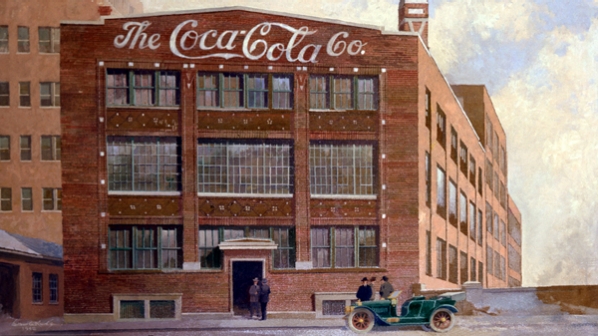
Other important events contributing to Atlanta’s modernization during this time period include the incorporation of The Coca-Cola Company, which would eventually grow to become the world’s largest non-alcoholic beverage producer, and the Cotton States and International Exhibition, an event attended by around 800,000 meant to demonstrate the south’s progress and foster new trade. The image above shows the headquarters of The Coca-Cola Company from 1909-1920. The company is an Atlanta icon; Its establishment and growth are a mirror to Atlanta’s progress as well as an indicator of the presence of a modernist ideology.
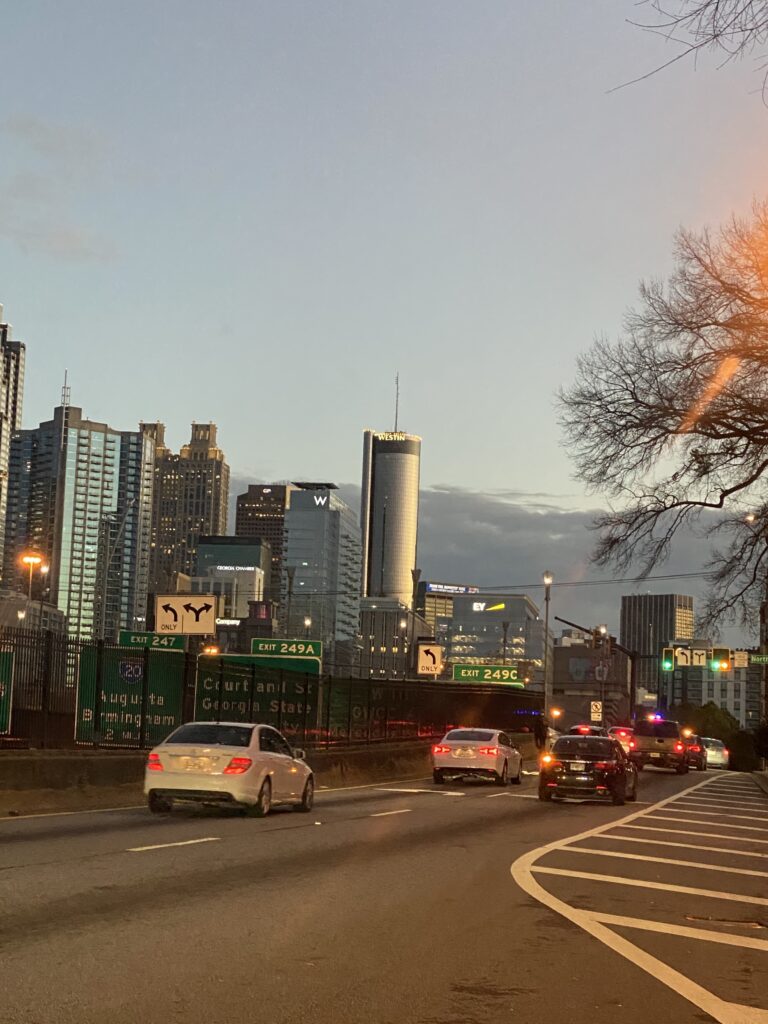
Today’s Atlanta is a far cry from the small antebellum town shown earlier. Through and after the modernist era, the city has developed into a true, bustling metropolis. The picture to the left shows some of the skyline. The buildings featured include The Westin, Ernst & Young, The W, and Georgia Pacific, all major international companies. In addition to these, Atlanta is home to 16 Fortune 500 companies, most notably The Home Depot, Delta Airlines, the United Parcel Service, and, of course, the Coca-Cola company.
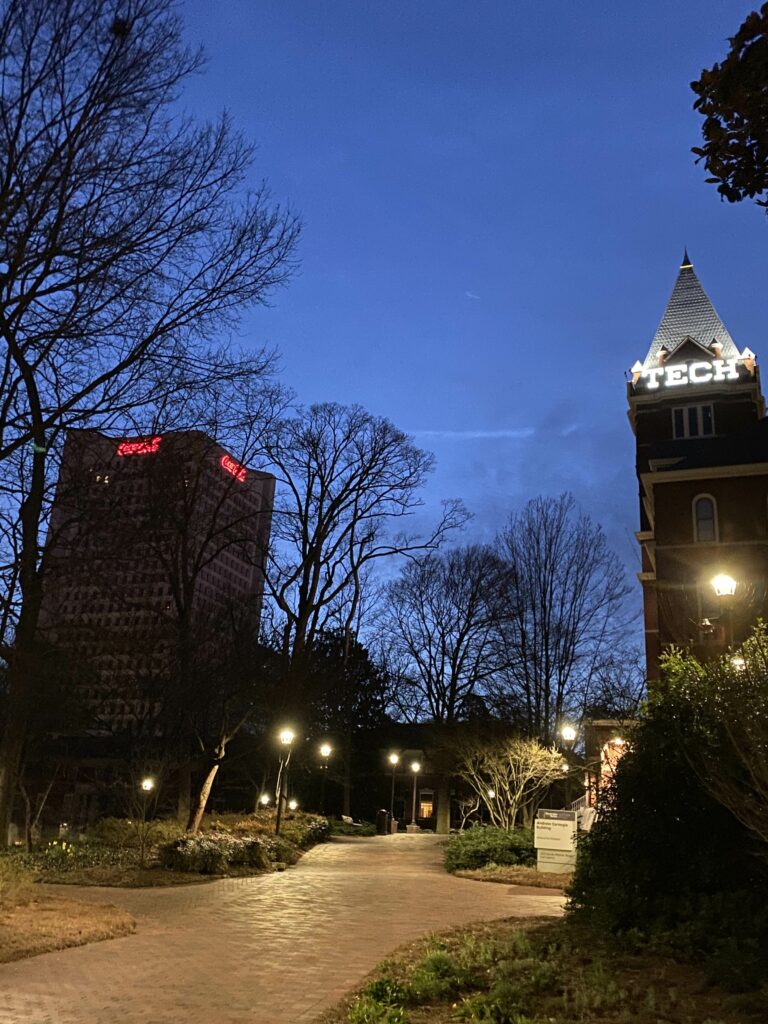
One image that perfectly embodies Atlanta’s progress is shown on the right. In the picture, the two prongs of modernism are present: Education and industry. As one grows and improves, so does the other. Since its inception, tech has expanded dramatically, now offering 37 majors in Engineering, the Sciences, Design, Business, Computing, and the Liberal Arts. It is a world-renowned Institution, placing 38th in the Times Higher Education World University Rankings. Coca-Cola, a forerunner and representative of Atlanta industry, has similarly grown. As previously mentioned, it is the world’s largest non-alcoholic beverage producer with over 200 brands including Minute-Maid, Costa Coffee, and Power-ade. It employs more than 700,000 people and made more than 33 billion in revenue during 2020. Coca-Cola and Georgia Tech are not the success stories Atlanta has. In recent times, the city has been recognized as a start-up haven with many promising companies arising from Atlanta Tech Village. Founding a start-up is the epitome of modernism. Strong start-up culture demonstrates that the modernist ideology is still alive and well in the city.
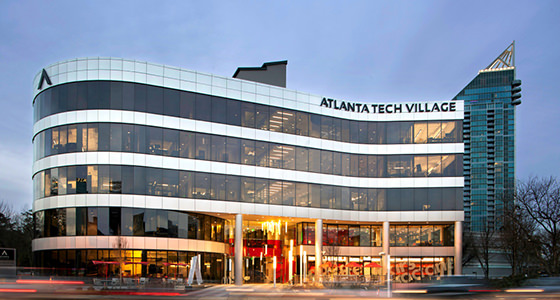
Not to mention, Atlanta is also home to Emory Healthcare, a cutting-edge medical research group, the Centers for Disease Control, and many regional offices of major companies including Google, AT&T, and Bank of America. At the core of all this innovation and advancement is modernism. No change is made without someone willing to depart with what they know and experiment with the new. If John Pemberton had not taken a chance with his recipe, The Coca-Cola Company would have never even existed. If Nathaniel Edwin Hariss and the other founders had not taken action to address Atlanta’s need for technical education, the city most likely would not have become the center of progress it is today.
Modernism is the embrace of the novel and unorthodox, and the rejection of the old and obsolete. It can be seen in the art of Picasso and the books of Joyce, but perhaps one of the best demonstrations of it is the city of Atlanta. Through modernism, the city was transformed from a modest, traditional town to a diverse, ever-changing metropolis. It is the home of countless industry giants and a hub for scientific research and advancement. Here, new ideas and projects are created every day, all pushing the envelope of progress. Modernism shaped this city, and the philosophy behind will continue to do so forever.
Sources:
Davis, Stephen. “Civil War: Atlanta Home Front.” Georgiaencylopedia.Org, 10 Mar. 2003, www.georgiaencyclopedia.org/articles/history-archaeology/civil-war-atlanta-home-front#:~:text=At%20the%20time%20of%20the,all%20points%20of%20the%20South.
Waynedanielanderson. “Atlanta’s First Buildings In Pictures: 1830-1900.” Georgia Globe Design News, 17 Sept. 2015, wdanielanderson.wordpress.com/2015/09/12/atlantas-first-buildings-in-pictures-1830-1900.
“Biggest US Cities in 1860 – Historical Population Data.” Biggestuscities.Com, 2021, www.biggestuscities.com/1860.
“World University Rankings 2021.” Times Higher Education (THE), 7 Sept. 2020, www.timeshighereducation.com/world-university-rankings/2021/world-ranking#!/page/1/length/25/sort_by/rank/sort_order/asc/cols/stats.
Wikipedia contributors. “History of the Georgia Institute of Technology.” Wikipedia, 29 Jan. 2021, en.wikipedia.org/wiki/History_of_the_Georgia_Institute_of_Technology.
Wikipedia contributors. “History of Atlanta.” Wikipedia, 6 Jan. 2021, en.wikipedia.org/wiki/History_of_Atlanta
“The Coca-Cola Company – More than a Beverage Company.” The Coca-Cola Organization, www.coca-colacompany.com/company. Accessed 28 Feb. 2021.
“FORTUNE 500 & 1000 Companies Headquartered in Metro Atlanta.” Metroatlantachamber.Com, www.metroatlantachamber.com/resources/most-popular/fortune-500-fortune-1000-in-metro-atlanta. Accessed 28 Feb. 2021.

I really enjoyed reading about how much Atlanta has changed over the years from being an Agricultural city to becoming one the most industrialized cities in the US. The amount of tribulations that Atlanta had to go through and overcome just to survive as a city is why I have grown to love Atlanta so much. I myself have grown up in Atlanta my whole life and to see how much it has changed in the span of my own lifetime is just so amazing. I have seen businesses come and go, buildings being destroyed and rebuilt, etc. This city has grown and will continue to grow. I loved how you were able to capture and analyze the rich history of the empire of a city Atlanta is becoming and I thank you for that. I also enjoyed how you choose to go for more historical pictures rather than art work because art will never be able how Atlanta was able to literally rise from the ashes and become a beautiful city.
I really enjoyed reading your essay. Being an outsider, this made me aware of the rich history of this city, and its transition from a being a primarily agricultural city to now one of the major technical and industrial hubs in the country. I agree that Atlanta is representative of the progress of the south post the Civil war. I didn’t realize before how big of a role Georgia Tech had played in development of Atlanta, and more importantly how it has its very roots in modernism. I also like how your visual representation of modernism isn’t just art, but actual pictures that show Atlanta’s development over time.